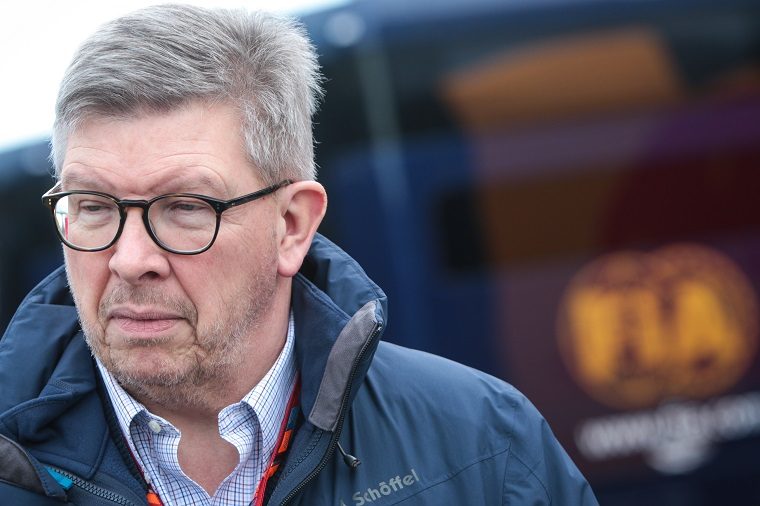Formula 1 Reverse Grid Idea Likely to Be Abandoned

Formula 1 is looking likely to abandon the reverse-grid qualifying format it was planning to trial for 2020. In a desperate bid to spice up the races, generate more overtaking and tighten the playing field, F1’s bosses had played around with the idea of changing up the tried-and-true qualifying format that has been around in essence since 2006 (and that, after a few tweaks, has been unchanged since 2010 excepting a disastrously unpopular format that was implemented at the start to the 2016 season and then quickly abandoned).
The proposed idea had been to have drivers line up in reverse championship order for a sprint race on Saturday, and use the results of that race to determine the grid order for the main event on Sunday. The idea was quickly slammed by drivers and fans alike, but F1 sporting director Ross Brawn had insisted on the need to try new ideas on a small scale.
“We are all too aware that the current qualifying format is exciting and spectacular but what is also important is to make sure that the race, the highlight of the weekend, is the best it can be,” he said. “And since, no matter how many simulations you run, there’s no measure more accurate than the track, Formula One, the teams and the FIA are studying the possibility of a revised format for a small number of events for next season. With stable sporting and technical regulations in place for 2020 it is the perfect time for such evaluations.”
Experiment And Evaluate: The benefits buying or leasing a car

Brawn added that F1 should not be afraid of conducting experiments else it never change and develop. Even so, the plan to trial the new format at three races during the 2020 season — in France, Belgium, and Russia — was struck down during a Paris meeting between the teams and the sport’s governing bodies that took place last week, as it failed to get the unanimous support that would have been necessary to alter the regulations.
The top teams in particular rejected the idea, claiming it would be too difficult for them to make up ground after starting from the back. Another concern was that it would drive up costs, as an additional race session would increase the incidence of crashes. More importantly, however, there is the sense that the change wouldn’t actually solve anything, and most of the drivers are in agreement that attempts to change the qualifying format overlooks F1’s actual problems.
“The fact they are trying to reverse grids and all that seems to me like an excuse for not doing a good enough job in the decision process,” said soon-to-be six-time champion Lewis Hamilton. “Why are they making the cars heavier? There’s no reason, it’s not safer, it’s not better for racing. My points are still the same. I’m still concerned. And I don’t think that’s going to change from what I’ve witnessed in the meeting [about 2021].”
Got Into A Crash? After the hospital, this is where to go next

Photo: Artes Max
Four-time champion Sebastian Vettel called the plan “bullshit,” and Romain Grosjean, who heads the Grand Prix Drivers’ Association, said the new qualifying format was an answer to a question nobody was asking. “I think the GPDA point is that, and it’s from 100 percent of drivers, that the problem is not the way the weekends are, the problems are bigger than that. We are not trying to address things with a small spoon when a good old pan will do the job,” he said.
Grosjean continued by highlighting four areas the GPDA had identified F1 needs to improve: the sensitivity of the tires, the distribution of money, the weight of the cars, and aerodynamic sensitivity. “We believe that if those four points are sorted then the championship doesn’t need any tricks of whatever,” he explained, and these thoughts were echoed by McLaren driver Carlos Sainz Jr.
“I think we first need to see an F1 with a tight field and with cars that are able to follow,” the Spaniard said, arguing in favor of bringing the field closer together organically rather than via superficial methods. “Once we have a 2021 with cars that are able to follow, and a whole grid within one second…we might not need any of those changes,” he added.
“We might have the best F1 ever without any of those changes. So why don’t we focus on making F1 how it should be, which is closer competition, more equal money distribution and cars that are able to follow each other? Then all of a sudden you have a good F1 and maybe you don’t need all the other stuff.”

The News Wheel is a digital auto magazine providing readers with a fresh perspective on the latest car news. We’re located in the heart of America (Dayton, Ohio) and our goal is to deliver an entertaining and informative perspective on what’s trending in the automotive world. See more articles from The News Wheel.

